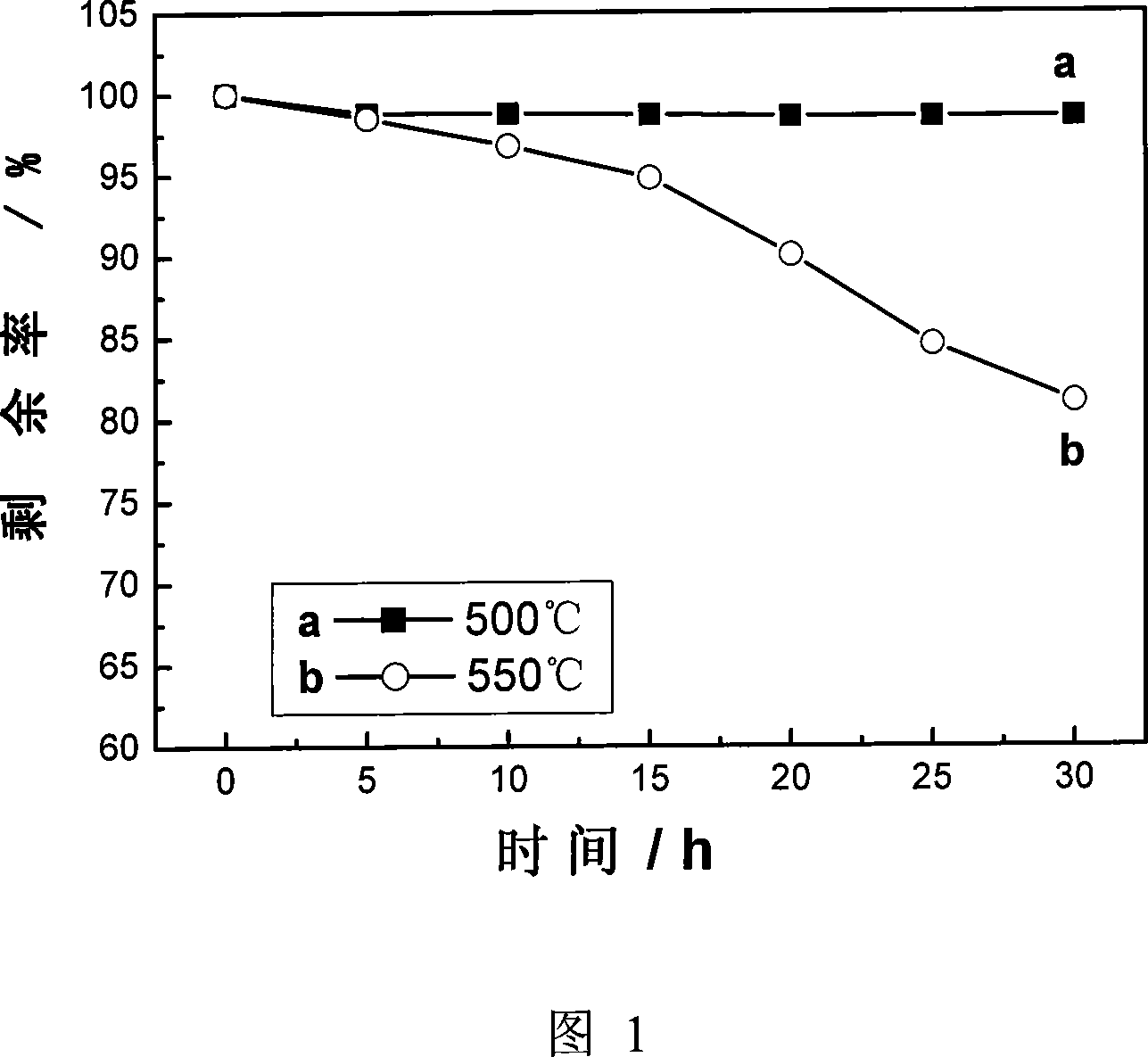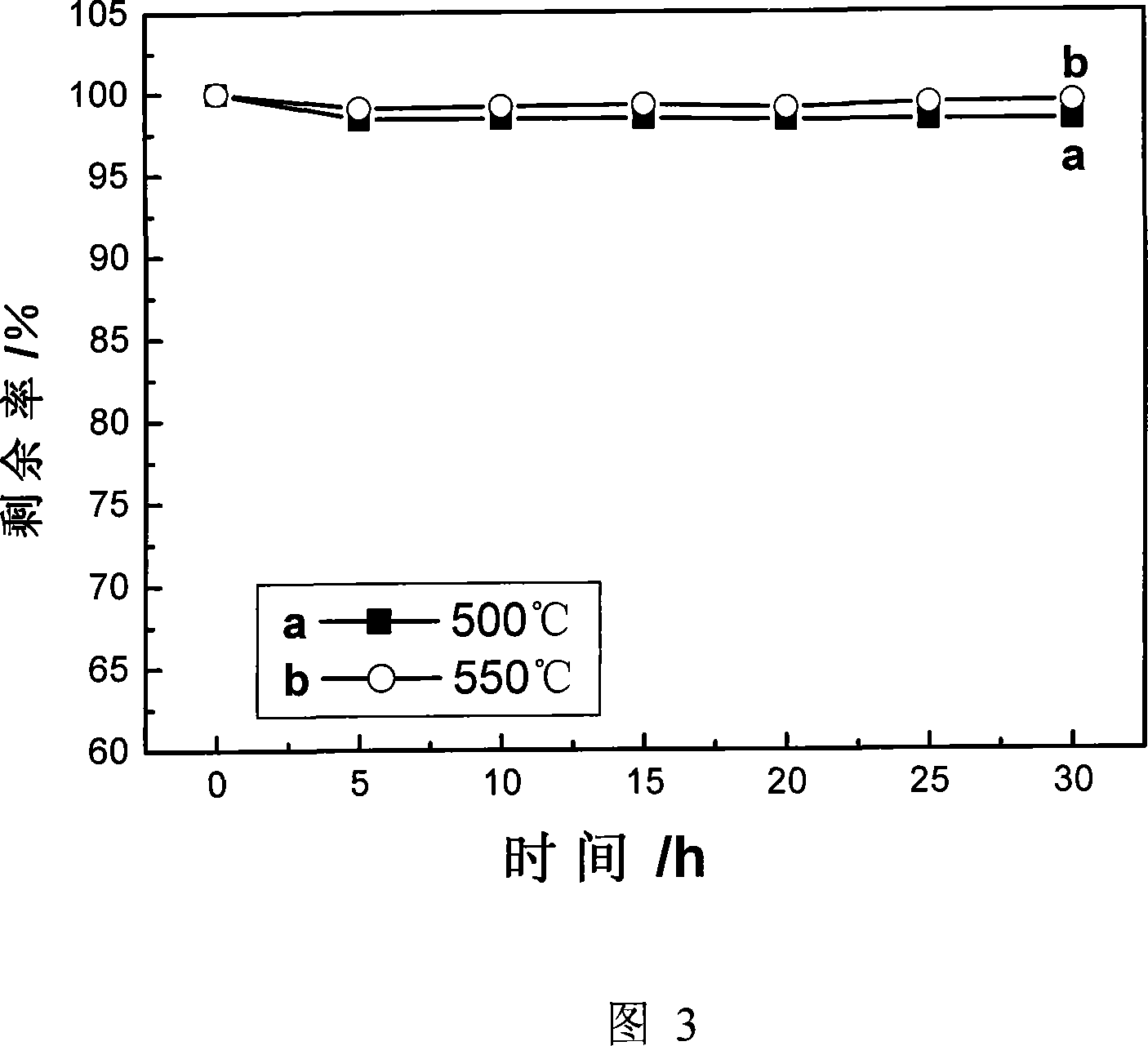Fusion tray of thermal transmission and storage medium, and preparation method
A heat storage medium and molten salt technology, which is applied in the fields of chemical industry and solar energy utilization, can solve the problems of low heat engine efficiency, low solar energy utilization efficiency, and high working temperature in power generation systems, achieve large phase change latent heat, expand the working temperature range, and improve thermal efficiency. The effect of decomposition temperature
- Summary
- Abstract
- Description
- Claims
- Application Information
AI Technical Summary
Problems solved by technology
Method used
Image
Examples
Embodiment 1
[0034] Mix cesium nitrate and potassium chloride with a mass ratio of 0.1:1 and stir evenly, heat statically until the solids are completely melted, keep the temperature for 10 minutes, and cool naturally to room temperature to obtain the additive.
[0035] The mass percentage is 52.5% potassium nitrate, 6.9% sodium nitrate, 39.6% sodium nitrite, and 1% of the additives are mixed and stirred evenly, statically heated until the solids are completely melted, then kept for 10 minutes, and then naturally cooled to room temperature to obtain the molten salt heat transfer heat storage medium.
[0036] The thermal stability of the prepared molten salt medium was tested. The test is carried out by gravimetric method: in a nickel crucible, add the prepared molten salt, weigh it with an analytical balance, and then statically heat until the solid is completely melted and the temperature of the molten salt reaches 500°C, keep it warm for 5 hours, and cool naturally to room temperature T...
Embodiment 2
[0041] Mix cesium nitrate and potassium chloride with a mass ratio of 0.8:1 and stir evenly, heat statically until the solids are completely melted, keep the temperature for 30 minutes, and cool naturally to room temperature to obtain the additive.
[0042] 40% potassium nitrate, 10% sodium nitrate, 47% sodium nitrite, 3% of the additives were mixed and stirred evenly, statically heated until the solids were completely melted, then kept for 30 minutes, and then naturally cooled to room temperature to obtain the molten salt heat transfer heat storage medium.
[0043] The thermal stability performance of molten salt media was tested. Test method is the same as embodiment 1. The results showed that the thermal stability of the modified molten salt at 550°C increased correspondingly with the addition of additives.
[0044] The melting point and latent heat of phase change of molten salt are tested. Test method is the same as embodiment 1. The test results show that the melting...
Embodiment 3
[0046] Mix cesium nitrate and potassium chloride with a mass ratio of 0.2:1, stir evenly, heat statically until the solids are completely melted, keep the temperature for 15 minutes, and cool naturally to room temperature to obtain the additive.
[0047] 70% potassium nitrate, 6% sodium nitrate, 21% sodium nitrite, 3% of the additives were mixed and stirred evenly, statically heated until the solids were completely melted, then kept for 15 minutes, and then naturally cooled to room temperature to obtain the molten salt heat transfer heat storage medium.
[0048] The thermal stability performance of molten salt media was tested. Test method is the same as embodiment 1. The results showed that the thermal stability of the modified molten salt at 550°C was also enhanced with the increase of additive dosage.
[0049] The melting point and latent heat of phase change of molten salt are tested. Test method is the same as embodiment 1. The test results show that the range of impr...
PUM
| Property | Measurement | Unit |
|---|---|---|
| melting point | aaaaa | aaaaa |
| melting point | aaaaa | aaaaa |
Abstract
Description
Claims
Application Information
 Login to View More
Login to View More - R&D
- Intellectual Property
- Life Sciences
- Materials
- Tech Scout
- Unparalleled Data Quality
- Higher Quality Content
- 60% Fewer Hallucinations
Browse by: Latest US Patents, China's latest patents, Technical Efficacy Thesaurus, Application Domain, Technology Topic, Popular Technical Reports.
© 2025 PatSnap. All rights reserved.Legal|Privacy policy|Modern Slavery Act Transparency Statement|Sitemap|About US| Contact US: help@patsnap.com



